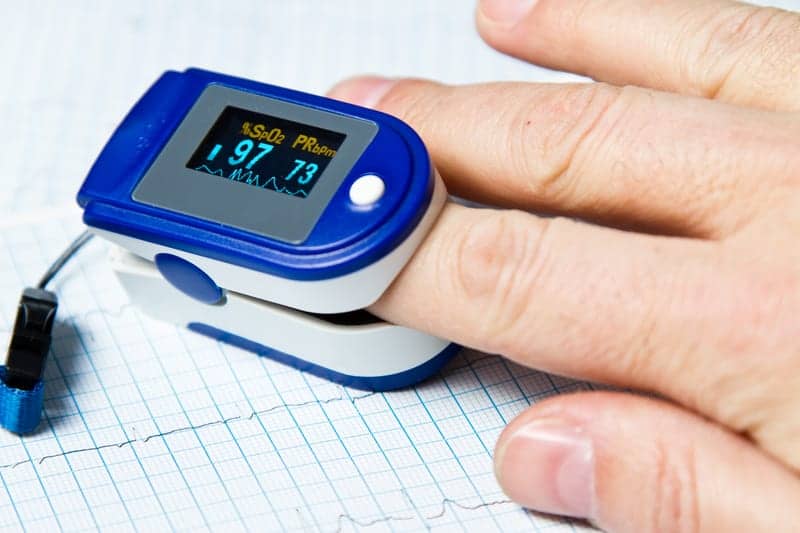In today’s busy world, keeping track of our health is more important than ever. One of the best tools for this is the SpO2 Sensor. This small device helps us stay alert and healthy by monitoring the oxygen levels in our bodies. Imagine being able to monitor your health continuously so that you can take preventative measures before issues develop.
You can control your health and prevent problems with a single, easy-to-use device. Let’s look at why these sensors matter, how they work, and the types you can find.
What is a SpO2 Sensor?
At its core, a SpO2 Sensor measures the oxygen saturation level in your blood. This non-invasive device provides real-time information about how well oxygen moves throughout your body.
Understanding your oxygen levels can help detect potential health issues early on. The Pulse Oximeter Sensor is essential for monitoring your health at home or in a clinical setting.
How Do SpO2 Sensors Work?
These sensors measure light absorption and use light wavelengths to differentiate between oxygenated and unoxygenated blood. This non-invasive method provides rapid feedback on blood oxygen levels, helping in maintaining vital oxygen saturation.
The Science Behind It
These sensors use pulse oximetry. The device shines a light through your skin, usually on a fingertip, and measures the amount of light absorbed by oxygenated and deoxygenated blood. The ratio of these measurements is then used to calculate the percentage of oxygen in your blood; this is what we call the SpO2 level.
What Do the Numbers Mean?
Usually, a regular SpO2 reading falls between 95% and 100%. A medical emergency may be indicated if your reading falls below 90%. You can learn important information about the condition of your respiratory system by routinely checking your SpO2 levels.
Why Are SpO2 Sensors Important?
SpO2 Sensors help you identify health issues early because they provide fast information about your oxygen levels. You can improve your health and safety by routinely checking your oxygen levels.
1. Early Detection of Health Issues
Access to real-time data from your Pulse Oximeter Sensor can alert you to potential problems before they worsen. Conditions like asthma, COPD, and even COVID-19 can impact oxygen levels. Timely medical intervention can save lives when it results from early detection.
2. Management of Chronic Conditions
Regular monitoring of oxygen levels is essential for individuals with chronic respiratory or cardiac conditions. A Disposable SpO2 Sensor allows for easy, regular checks without the need for complex equipment, making it perfect for home use. This comfort of monitoring helps patients, which also supports better condition management.
3. Improving Athletic Performance
Athletes are using Spo2 Probe more often to check their performance and recovery. By monitoring their oxygen levels while training, they can improve their workouts and build stamina. With this knowledge, they can safely and effectively set new goals.
Types of SpO2 Sensors
Several types of SpO2 Sensors are available, each designed to meet different needs and preferences for monitoring oxygen levels.
1. Finger Pulse Oximeter
This is the most common type, typically used at home or in clinics. It’s portable and easy to use; just clip it onto your fingertip and get instant results. Its ease of use makes it a vital tool for anyone wishing to monitor their health.
2. Disposable SpO2 Sensors
These are ideal for healthcare settings where hygiene is a priority. Being single-use, they reduce the risk of cross-contamination, providing patients with a safer experience.
3. Wrist and Forehead Monitors
These newer models provide continuous monitoring and can be worn comfortably during daily activities or workouts. They give you a simple way to monitor your oxygen levels.
How to Use a SpO2 Sensor?
Using a Pulse Oximeter Sensor is simple:
- Position: Place the sensor on your fingertip or earlobe.
- Wait: Hold still for a few seconds while it measures.
- Read: Check the display for your SpO2 level.
Tips for Accurate Readings
- Ensure your hands are warm.
- Remove nail polish or artificial nails if using a finger sensor.
- Stay still during the measurement.
Final Words
Disposable SpO2 Sensors are essential for checking your health. They support you in monitoring your oxygen levels, which is necessary for managing chronic illnesses and identifying problems early.
At BRAINWAVE MEDISYSTEMS, we offer high-quality SpO2 Sensors that help you take control of your health. With options like Pulse Oximeter Sensors, we make it easy to stay healthy.
When you check your SpO2 levels, remember that they are not just numbers; they are a part of your health.
FAQs
Q.1 Why is SpO2 monitoring necessary?
Ans. SpO2 monitoring is essential because it helps track oxygen levels in the blood, ensuring patients receive enough oxygen, which is vital for their health and well-being.
Q.2 What is the use of SpO2 Sensor?
Ans. The SpO2 Sensor is used to measure the oxygen saturation in a person’s blood. It helps doctors monitor patients, especially those with respiratory or heart problems.
Q.3 What are the benefits of the oxygen sensor?
Ans. Oxygen sensors provide quick and accurate readings of oxygen levels, allowing for early detection of issues. This helps guide treatment decisions and improves patient outcomes.
Q.4 What is the clinical significance of SpO2?
Ans. The clinical significance of SpO2 lies in its ability to indicate how well oxygen is being transported in the body, aiding in diagnosing and managing various health conditions.
Q.5 What is the full form of SpO2?
Ans. SpO2 stands for Saturation of Peripheral Oxygen – the amount of oxygen in the peripheral circulation. In other words, SpO2 is the ratio of oxidized hemoglobin (hemoglobin with oxygen) to total hemoglobin in the blood.



